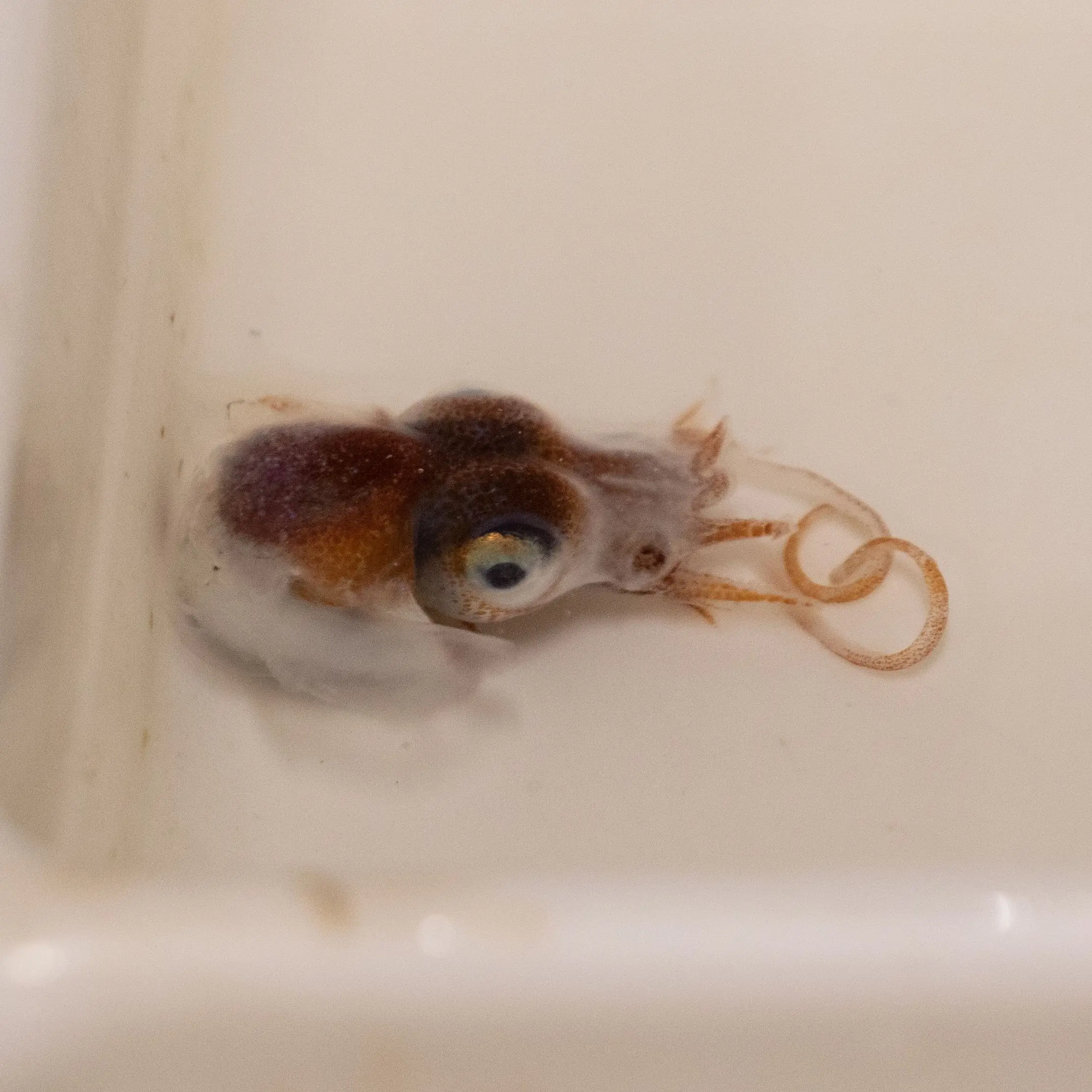Bobtail squid
The ridiculously cute critter with a cunning camouflage method
Meet Stoloteuthis maoria, one of the bobtail squids: tiny, glowing and with flapping fins like Dumbo ears. These fins are huge for its size, almost as large as the minute mantle, and the squid uses its ear-fins to power itself through the water.
The whole squid is about the size of a highlighter lid, and it has a big photophore on its belly which takes up most of the space there. This light organ is used for counter-illumination, an ingenious method of active camouflage used by many bioluminescent marine species. The bobtail squid calibrates the light produced by its photophore to match the strength and wavelength of the sunlight filtering down from above, which hides its silhouette from predators viewing it from below. It becomes invisible.

Above: Melanie and Heather examine a Bobtail squid specimen.
Who needs camouflaged colouration when you can hide in your own glow?
This bobtail squid species is found over deep water all around NZ and the eastern Pacific, and appears in our mesopelagic trawls. It has a number of cousins overseas, including the Hawaiian bobtail squid (Euprymna scolopes). This one rivals our bobtail for predator evasion methods, if such a feat is possible. Euprymna has a symbiotic bacteria which it houses in little pockets all over its body, and it can shove the bacteria out in a big glowing cloud to distract predators, giving it time to escape. However, once the cloud is used, it has to wait to the bacteria to recolonise before it can use that method again.


